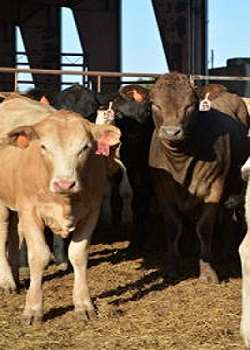By Blair Fannin
Cattle inventory across the U.S. will continue to expand and that will likely keep prices in moderation through 2017, according to a Texas A&M AgriLife Extension Service economist.
Dr. Jason Johnson, AgriLife Extension economist in Stephenville, discussed cattle market trends during the recent Blackland Income Growth Conference in Waco.
“There’s more cattle and cheaper prices,” Johnson said.

Cattle prices began a rapid downward spiral leading into the fall.
“It seems like we fell off a cliff fast,” he said. “We started building back the cow herd at about a 3 percent clip and then prices fell nearly 40 percent this year.”
Johnson said during 2015 when cattle prices hit historic highs, feedlot operators were bidding up on feeder cattle to keep pens full and operations going. Feedlots operate much like hotels, attempting to keep occupancy rates high.
“When they closed the books on those pens of cattle, they were losing $300 to $400 a head,” he said. “They started getting more judicious on what they paid for them in 2016. Overall, I think the bubble has been burst. We are now back down to more historic spread levels. I don’t think we will see another drop quite so dramatic as inventory and price expectations have returned to levels that should permit some participants at all levels of the supply chain to be profitable.”
Johnson said there will be buildups in cattle inventory over the next two to three years.
“That doesn’t mean that prices will continue to decline,” he said. “That dislocation of what feedlots were losing has gone away.”
Feedlot placements for 2016 have been on the increase, he said.
“You’ve got a pen of calves ready to market, do you take them to sell right now? I can tell you a lot of folks are holding back a little bit. But that can’t go on forever. There could be some spillage in the first quarter of 2017 and we could see some (more) downward prices.”
Other protein meats such as broilers and pork have increased production.
“Broiler production is at all-time highs. There’s a lot of protein on the market right now, as much as there has ever been. We also have a lot of beef.”
Johnson said there are export trade opportunities that will help market the excess beef. Japan, Canada, Mexico and South Korea are the current top U.S. export markets. With a new presidential administration, there could be further trade opportunities for beef.
Click here to see more...